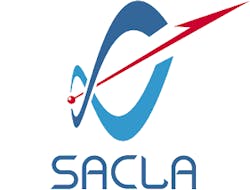Riken and JASRI unveil SACLA, Japan's first x-ray free-electron laser
Harima, Japan--Riken and the Japan Synchrotron Radiation Research Institute (JASRI) have cut the ribbon on a new cutting-edge x-ray free-electron laser (XFEL) facility in Harima, the first such facility in Japan and only the second in the world. Nicknamed "SACLA" (Spring 8 angstrom compact free-electron laser), the new XFEL's intense beams will open a window onto the minuscule structure of molecules and rapid reaction of chemical species.
When researchers study objects on the atomic scale, they are confronted with the diffraction limit: they cannot "see" anything much smaller than the wavelength of light they use. The new XFEL promises to overcome this limitation with light of a wavelength and intensity like none ever produced before, enabling researchers for the first time to directly observe individual atoms and molecules.
Angstrom-scale measurements
To check that the XFEL is functioning properly, researchers at SACLA conducted a series of tests on various aspects of the new facility. While confirming the beam's expected intensity, the tests also indicated that the beam's wavelength, at 0.8 angstroms, was right on the mark. Acceleration of the beam successfully reached a full 7.8 GeV, just shy of the target energy of 8 GeV.
The success of these initial tests marks the first step toward realizing angstrom-scale measurements of molecular and atomic structure, setting the stage for full-scale experiments using the new XFEL. The success is also a triumph for Japanese craftsmanship, given that many of the components for SACLA were independently designed and built by Japanese manufacturers.
Pronounced "sa-cu-ra" and meaning "cherry blossom" in Japanese, the facility's name commemorates these Japanese origins, while its logo symbolizes, among other things, the "8" GeV of energy it will generate once operating at full capacity. Shared use of the new facility is scheduled for the end of fiscal 2011.
About the Author
John Wallace
Senior Technical Editor (1998-2022)
John Wallace was with Laser Focus World for nearly 25 years, retiring in late June 2022. He obtained a bachelor's degree in mechanical engineering and physics at Rutgers University and a master's in optical engineering at the University of Rochester. Before becoming an editor, John worked as an engineer at RCA, Exxon, Eastman Kodak, and GCA Corporation.

